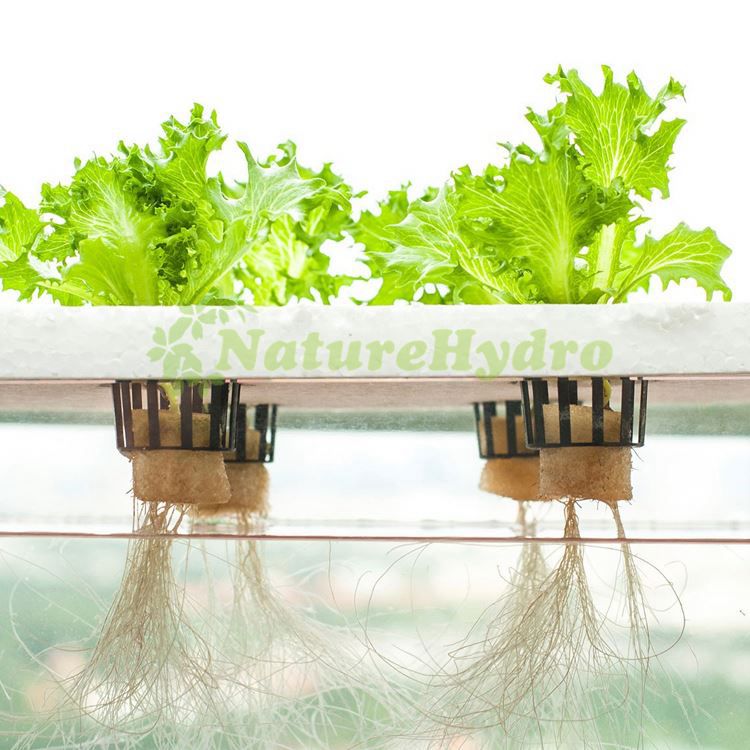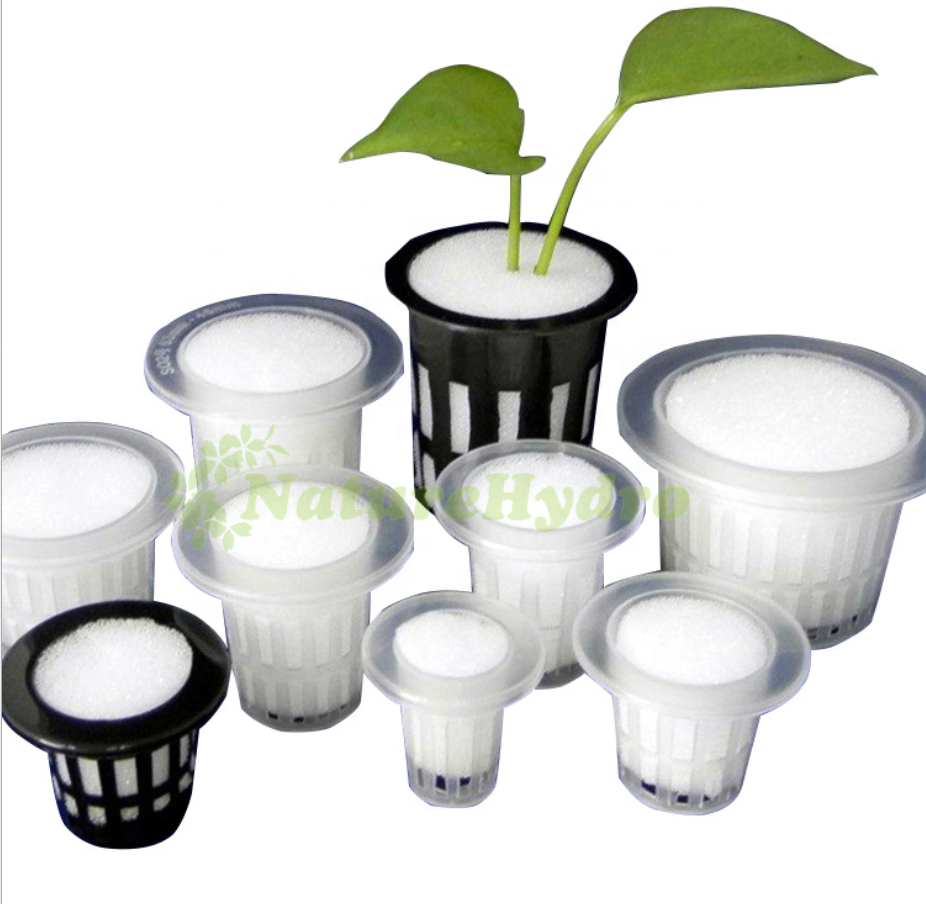Hydroponic culture is a new type of soilless culture. The core is to directly infiltrate the plant roots into the nutrient solution. This nutrient solution can replace the soil and provide plants with growth factors such as water, nutrients and oxygen, so as to ensure the normal growth needs of plants.
Let’s briefly talk about the key steps of hydroponic culture
1. Select appliances
Hydroponic containers can be selected according to the planting area and environment, as long as they are watertight and appropriate in size, but larger containers are recommended in the middle of large and small containers. For example, foam fruit box, beverage bottle, plastic lunch box, finished yogurt and jelly shell and so on. Be careful not to use containers that are easy to heat transfer, such as iron tanks and cans, because these containers will cause the temperature change of nutrient solution and denaturation.
The key of hydroponic culture is to provide for the roots of plants soaked in water conservancy, because the water source has no small gap like soil to let the air drill in, which can only be achieved by increasing the dissolved oxygen in the water. There are many ways to increase the oxygen content in water. The simple way is to grow green algae in the water. (hydroponic containers should preferably be transparent to facilitate photosynthesis by green algae.)
Trace algae spores are attached to the air, and green algae are photoautotrophic organisms. They can grow with sunlight, carbon dioxide and water. After generating oxygen or when the water flows, we need a water pump to pump water circularly, and we also need a timed power switch to control the circulation times of the water pump. (if you keep goldfish at home, you can use goldfish oxygen pump instead.)
2. Prepare nutrient solution
The essential elements for plant growth are carbon (c), hydrogen (H), oxygen (o), nitrogen (n), phosphorus (P), potassium (k), calcium (CA), magnesium (mg), sulfur (s), iron (FE), manganese (MN), zinc (Zn), copper (Cu), molybdenum (MO), boron (b) and chlorine (CL).
The main nutrient elements in hydroponic culture come from water, which is different from soil planting. The soil contains various plant elements, even if it is lack of some element, it will show up slowly. If hydroponic culture is lack of some element, it will show up soon. Nitrogen plants grow leaves wildly, and phosphorus plants turn purple and premature senescence. In most cases, excess manganese will lead to root browning and brown spots on leaves. Excess boron is easy to lead to yellowing or scorching of leaves. Some vegetables need more magnesium if they like magnesium, and some vegetables need more sulfur if they like sulfur. The nutritional formula of lettuce is attached below:
The culture medium formula of lettuce is:
Ca (NO3) 2 · 4H2O (calcium nitrate) 589.3mg/kg,
KNO3 (potassium nitrate) 886.9mg/kg,
NH4NO3 (ammonium nitrate) 57.1mg/kg,
MgSO4 (magnesium sulfate) 182.5mg/kg,
K2SO4 (potassium sulfate) 53.3mg/kg,
H3PO4 (phosphoric acid) 0.223ml/kg.
Add trace element formula:
Edtafe 16mg / kg,
H3po3 (boric acid) 3mg / kg,
MnSO4 (manganese sulfate) 2mg / kg,
ZnSO4 (zinc sulfate) 0.22mg/kg,
CuSO4 (copper sulfate) 0.08mg/kg,
(NH4) 6mo7o24 • 4H2O (ammonium molybdate) 0.5mg/kg
After the nutrient solution is prepared, pay attention to sealing and preservation. It is best to have a brown reagent bottle with rubber stopper or frosted glass stopper. If you are a transparent container, you’d better wrap the newspaper outside to block the light and put it in the shade. Especially for solutions containing trace elements, pay attention to shading.
If it is not easy to mix nutrient solution, you can choose hydroponic nutrient solution sold in the horticultural market and mix it in proportion. In addition, attention should be paid to the selection of water for hydroponic culture. Tap water is the best choice, because river water and rainwater contain many minerals and heavy metal pollutants, pH value cannot be detected, and may also contain many miscellaneous bacteria or algae spores.
In the process of hydroponic culture, plant roots will secrete substances to dissolve into the water, which is easy to breed bacteria. Some bacteria in the air also fall into the water and reproduce. In order to ensure the healthy growth of plants for a long time, the nutrient solution should be replaced regularly. It is recommended to replace it once in about 10 days.
3. Seedling raising and transplantation

First, let’s talk about how to choose varieties. When growing vegetables under natural conditions, it’s best to ask this when buying seeds. Out of season vegetable planting needs the comprehensive adjustment of temperature, humidity and light. The varieties of leafy vegetables are the best, such as rape, cabbage, lettuce, tomato and cucumber can also be planted, but the requirements are relatively high.
Then there is seedling raising, which can be ignored if you choose to buy ready-made vegetable seedlings. There are two ways to raise seedlings. One is to put the seeds on things with strong water retention, such as soaked paper towels or biochemical sponges. The seeds will germinate soon, but this method will not last for a few days. Or you can put it on the professional hydroponic planting cotton with two cuts.
Another method is to raise seedlings with sand river or loose soil. For later transplantation, sand and loose mud are less likely to damage roots.
When the seedlings grow to 5-10cm, they will be transplanted. At this time, prepare some sponges to fix the stems of the seedlings. When the vegetables grow larger, the fixed sponges can be removed.
4. Cultivation
The foam board should have the function of fixing seedlings, and the plastic plate should also be possible. But the foam board is better to cut, and it can float on the water when your container is bigger and you can’t find anything that can hold the container.
In addition, when it comes to water level control, if the general culture medium such as green vegetables is about 10cm high, it is best to let the root neck leak a little sleep, let the root contact a little air, change the nutrient solution once in about 10 days, and remove the green algae growing in the container. During these 10 days, if the evaporation of the culture medium decreases, just add water to the container. Do not add nutrient solution, otherwise the concentration of nutrient solution in the container will increase and the plants will burn seedlings. If it is a vine such as tomato and cucumber, it is more troublesome to maintain the root system. It needs shading, heat preservation, oxygen and root pruning. Another problem is that vegetables are generally in summer in the later stage of production. The temperature begins to rise and it is easier to produce insects. At this time, some pesticides need to be used. I can know more about the use of specific pesticides, which is not my major.

That’s all about the infrastructure of hydroponic cultivation. I’ll share what I want to share later. Thank you.
Post time: Mar-09-2022
